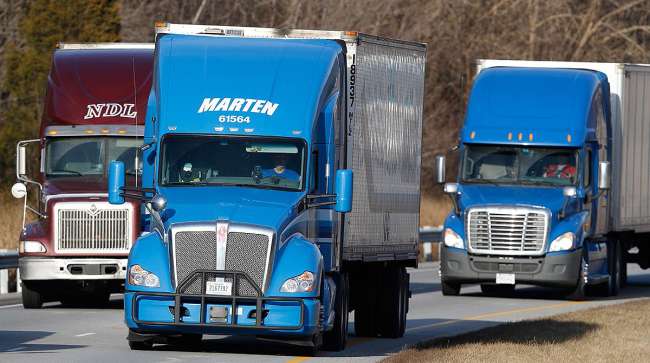Senior Reporter
Some Carriers Worry How Proposed Safety Scoring Could Affect Them

While a recent public meeting hosted by the Federal Motor Carrier Safety Administration gave motor carriers a chance to vent on a possible plan that could modify the way the agency assesses the safety of the nation’s truckers, the meeting seemed to leave some of them uneasy over what the plan could portend for the future.
While regulators say they have an idea of the potential of the new “item response theory” or IRT model, recommended in an elite 12-member academic panel of Academy of Sciences, they struggle to define it in layman’s terms.
For example, here’s how academy panel member Daniel Blower, a respected commercial vehicle researcher at the University of Michigan Transportation Research Institute, defined the IRT model: “It increases the scientific validity of the scores by using the data in a more scientifically rigorous fashion that is respectful of the inherent variability in the data.”
Joe DeLorenzo, director of FMCSA’s Office of Compliance and Enforcement, envisions that the IRT model will help the agency “decide what things are really important.”
“But I think it’s still early,” DeLorenzo told Transport Topics after the Sept. 8 public meeting. “This is the very beginning of this process, and I think everybody wants to see where it’s going to go. I just think we don’t know that yet.”
DeLorenzo compared it to educators finding out what questions are the most important on a Scholastic Aptitude Test. But because those in the freight transportation business who have worked with an IRT model are next-to-impossible to find, the agency will have to seek outside assistance from statisticians, DeLorenzo said.
The 132-page congressionally-mandated study of the agency’s Compliance, Safety, Accountability program’s safety measurement system gave FMCSA credit for developing the CSA program and its safety measurement system, which the panel said is “defensible.”
But the panel recommended that the agency over a two-year period study and possibly shift to the more “rigorous” data-driven IRT model that would improve crash data and dig deeper into a variety of data that could measure the performance of individual trucks and buses, not just at the motor carrier level.
FMCSA officials say they have accepted the recommendations of the academy panel, which they must incorporate into a response plan due to Congress on Dec. 5.
To get a better picture of a carrier’s safety culture might require collection of such data as vehicle miles traveled, driver turnover rates and driver pay, the study said. But commenters at the public meeting indicated that most motor carriers would likely be unwilling to provide such data for proprietary reasons.
“With regard to the method and level of compensation, I’m sure you appreciate that competitive and confidentiality implications are a nonstarter that carriers would voluntarily give up that information,” said Rick Schweitzer, general counsel for the National Private Truck Council. “I also question at a very fundamental level whether the FMCSA has statutory jurisdiction to go into this area.”
Schweitzer added, “I frankly question the underlying assumption that either levels or methods of compensation have anything to do with a driver’s safety performance.”
“What’s confusing me a little bit is whether the whole purpose of this is to measure the safety characteristics of a motor carrier, or as what I originally thought was the purpose of CSA to provide FMCSA a methodology or tool for direct intervention with carriers with increased probability of a crash,” said Prasad Sharma, a trucking attorney with Scopelitis, Garvin, Light, Hanson & Feary.
One of the recommendations of the academy panel was for FMCSA to undertake a study to better understand whether more of the carrier safety profiles should become public to create more transparency for both the agency and motor carriers.
Thomas Connery, president of New England Motor Freight, complained that despite his company making a 40% improvement is its maintenance scoring category the score was still above the maintenance threshold, despite its better-than-average maintenance out of service violations.
“We have spent tens of millions of dollars on our vehicle maintenance program since CSA started,” Connery said. “I can tell you that this public display absolutely impacts the business we’re doing with customers. The fear is that somewhere down the road this is also going to turn into a lawyer’s best friend.”




